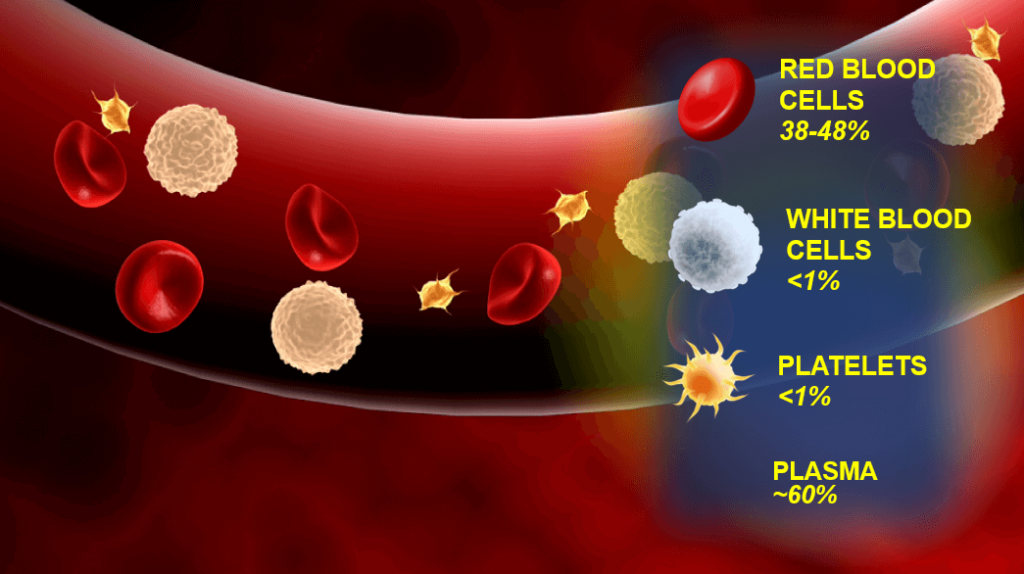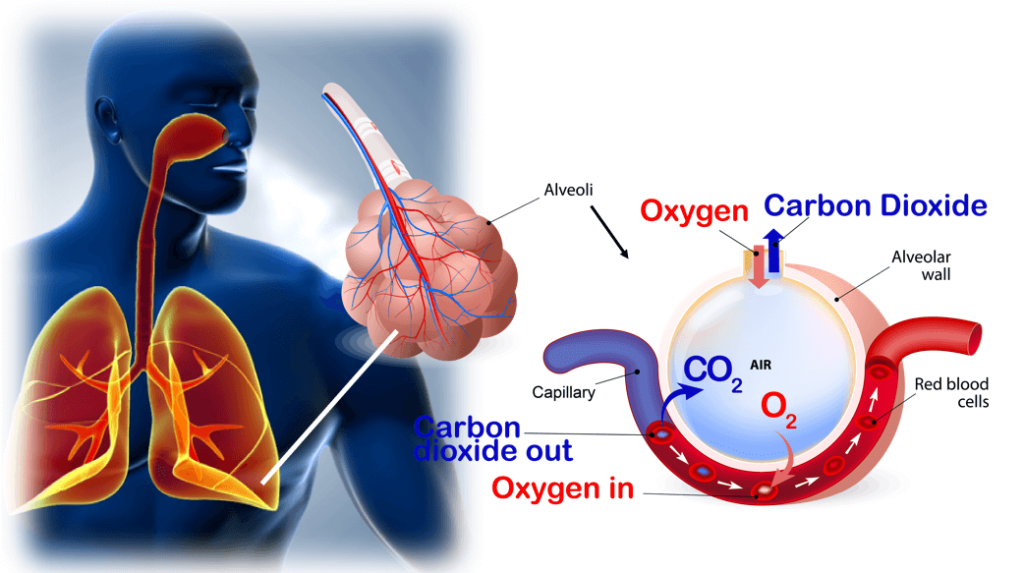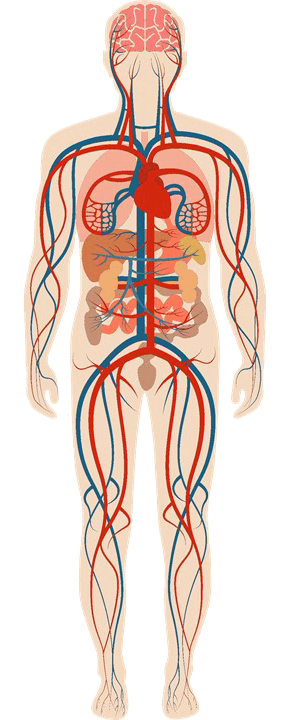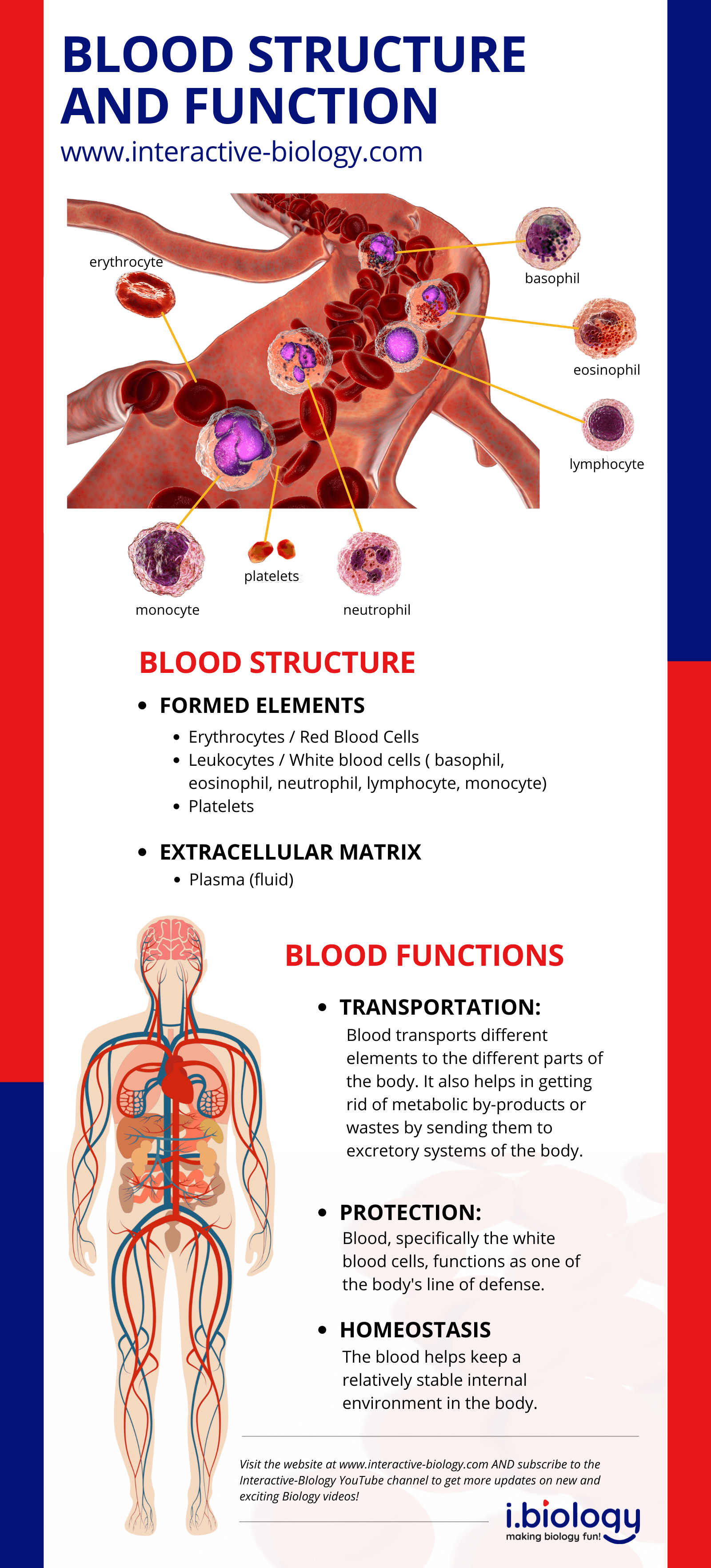Blood plays a vital role in the circulatory system as it performs its three main functions for the body namely, transportation, protection, and homeostasis.
Before we dive into its functions, let’s take a look at its basic structure.
Topic Outline:
Blood Structure
Blood is a unique type of connective tissue. As with all other connective tissues, it is made of cells (formed elements including the red blood cells, white blood cells, cell fragments, and platelets); and some extracellular matrix (fluid plasma).

The fluid part of the blood is what makes it unique among other types of connective tissues. It is this fluid where the formed elements are suspended, and it is through this that they are circulated to and from the body organs.
The 3 Main Circulatory Functions of the Blood
Transportation
Blood transports a lot of different elements to the different systems of the body.
Nutrients
Digested food that gets broken down has the nutrients absorbed on the way down your digestive tract. These nutrients, which include glucose, amino acids, vitamins, minerals, and fatty acids, have to be distributed to the different body systems where they are needed — heart, brain, muscles… all these need the nutrients from the food that you eat. Blood takes care of making sure that the different organs receive these nutrients.
Oxygen
The oxygen that you inhale from the air in your surroundings through the respiratory system also diffuses from the lungs into your bloodstream. The heart pumping the blood ensures that oxygen gets distributed to the different body systems.

Hormones
The blood also transports hormones throughout the body that perform all kinds of different functions.
Metabolic Wastes
One last thing when it comes to the transportation function of blood. Yes, we want to get the good stuff to the various parts of our bodies, but we also want to get the crap out.
Carbon dioxide, for example, that’s produced throughout your body as a byproduct of cellular respiration. You don’t want that to build up in your blood. That would change the pH of your blood and everything would just get out of balance. So, the blood takes it to the lungs and you breathe it out to remove it from your system.

Now, carbon dioxide is not the only one. Waste products are made all throughout your body, and you got to get rid of them somehow. Blood takes junk to the kidneys so that you can make pee and get that junk out in the toilet.
Protection
The second function is protection. Blood, specifically the white blood cells serves as the body’s defense. They are key parts of your immune system that helps fight against disease-causing bacteria and viruses.
Other types of WBCs may also seek and destroy abnormal or cancerous cells inside the body.
There are also other types of WBCs that would reside in a particular tissue just waiting for it to be triggered and “called into action.”
Platelets, together with other dissolved protein substances in the plasma interact to form clots that help prevent further blood loss in ruptured vessels.
Homeostasis
Homeostasis is essentially keeping things relatively stable in the body.
Say, for example, you go out in the hot sun on a summer day. Maybe you’re even out for a run. You start getting hot. Now you don’t want your insides to get hot. That would be bad.
The blood helps with that. More blood gets routed AWAY from your core and out to the periphery, like the skin. And of course, because it’s more superficial, it’s a bit cooler there. And when the blood passes by, the skin gives off heat to the environment to try to keep things relatively stable on the inside.

But, if you’re living in a ridiculously cold place, let’s say you’re outside playing in the snow because you love freezing your behind off, blood gets routed to your core to help keep things a bit warmer.

It also helps with homeostasis in other ways.
There are proteins and other compounds in the blood that help to maintain homeostasis by regulating and “buffering” the blood to help maintain the pH inside the body.
The key with all of these things is that if things get out of balance in the body (or out of homeostasis), it can have a bunch of negative effects on the body. But thanks to the blood, we can be okay.
Summary
To sum up, here are the important points in this article.
The blood is a type of connective tissue that is composed of the following:
- Some formed elements namely:
- Erythrocytes (RBCs)
- leucocytes (WBCs)
- platelets
- An extracellular matrix which is the fluid plasma.
In addition, it has 3 main functions in the body:
- Transportation – Blood transports different elements to the different parts of the body. It also helps in getting rid of metabolic by-products or wastes by sending them to excretory systems of the body.
- Protection – Blood, specifically the white blood cells, functions as one of the body’s line of defenses.
- Homeostasis – The blood helps keep a relatively stable internal environment in the body.
Next, let’s dive into the different components of the blood here.


